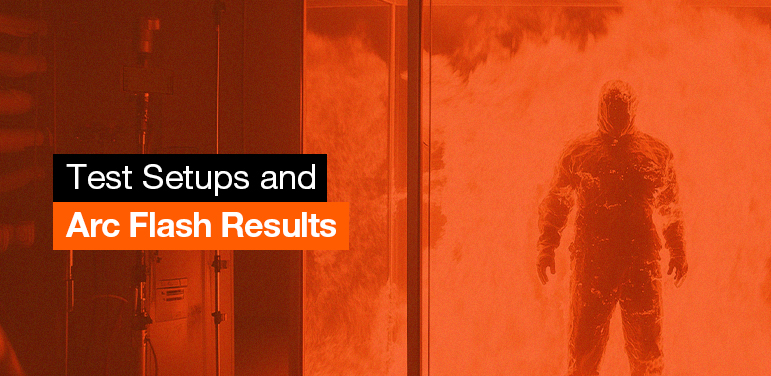Introduction
Understanding the effects of test setups and material testing parameters on arc flash results is vital for ensuring the safety of workers exposed to electrical hazards. The variability in heat transfer processes during arc flash events can significantly influence the arc ratings of personal protective equipment (PPE). This blog explores how different testing conditions impact arc flash results and discusses their implications for end users in various industrial settings.
The Heat Transfer Process in Arc Flash Events
Arc flash incidents involve complex heat transfer mechanisms that include:
- Radiant Heat Energy: Energy emitted as light and heat from the arc
- Convective Heat Energy: Heat transferred through the movement of air.
- Plasma Exposure: Direct exposure to superheated ionized gas
- Phase Transition of Metals: Changes in the state of metal conductors during an arc event
These factors contribute to the varying performance of PPE based on the testing conditions and materials used.
Test Setups
ASTM Testing Standards
The ASTM F1959 and F2178 standards involve a controlled testing environment using stainless steel electrodes with a gap of 12 inches. This setup, typically conducted at 3kV and 8kA, primarily assesses radiant heat exposure. While it provides a baseline for evaluating PPE, it does not reflect the conditions faced by industrial electricians.
IEEE Arc-in-a-Box Configuration
In contrast, the IEEE arc-in-a-box test configuration simulates more realistic industrial scenarios. Using copper conductors in a cubic setup, this test operates at lower voltages (600V to 480V) and higher fault currents (20kA to 50kA). The proximity of the conductors and the potential for more intense thermal exposure yield results that differ markedly from ASTM testing.
Effects on Arc Flash Ratings
Changes in Arc Ratings
Research indicates that the arc ratings of PPE materials can drop significantly under the arc-in-a-box test conditions. For instance:
- Hazard Risk Category 2 (HRC2): Arc ratings can decrease by 15% to 40%
- Hazard Risk Category 4 (HRC4): Arc ratings can decrease by 45% to 70%
Conversely, face shields show an increase in effective arc ratings under similar conditions, illustrating the distinct protective features of transparent materials.
Impact of Material Permeability
Material permeability plays a crucial role in the performance of PPE during arc flash testing. Fabrics with low air permeability tend to maintain their arc ratings better in arc-in-a-box conditions due to reduced convective heat transfer. In contrast, highly permeable materials may experience greater heat transfer and a subsequent decline in performance.
Implications for End User Applications
Need for Comprehensive Testing
Given the discrepancies between standard test results and real-world applications, it is essential for end users—such as electrical contractors and industrial safety managers—to consider both ASTM and IEEE testing results when selecting PPE. Relying solely on ASTM ratings may lead to underestimating the risks associated with specific industrial conditions.
Design Features for Enhanced Protection
Many arc flash suits incorporate overlapping layers in critical areas to enhance protection. For instance, designs that include hood flaps and bib overalls create additional layers of material, effectively increasing the arc rating in these regions. This design consideration is crucial for ensuring maximum protection against arc flash incidents.
Ongoing Training and Awareness
To effectively mitigate risks, organizations must prioritize ongoing training and awareness regarding the selection and use of PPE. Understanding the implications of different testing setups and material properties will empower workers to make informed decisions about their protective gear.


Leave a Reply